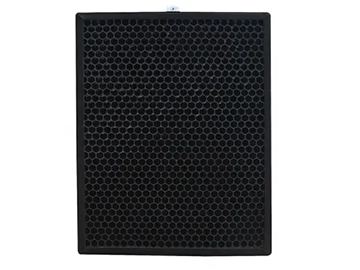Activated Carbon Reactivation
- 26 Mar, 2023
- 3842 views
Activated carbon is a covalent adsorbent. As such, it adsorbs molecules with a covalent tendency, which is the case for most organic molecules. It differs from other types of carbon because of its greater porosity and because it consists of graphite plates in which carbon atoms are bound together in an ordered fashion. This order makes them more stable than the atoms that make up amorphous carbon.
Activated carbon can become saturated with pollutants after a period of use, but it can usually be reactivated to almost its original adsorption capacity, so how can activated carbon be activated?

Thermal Activation
This is the most common method of reactivation. It is performed in an oven similar to the one used to thermally activate coal. The most common furnaces are rotary and multi-stage direct heating (by introducing flue gas). Typically, reactivation is carried out at temperatures between 500 and 800°C. The oxidation capacity of the atmosphere in the oven is limited by water vapor. Volatile compounds are released from the GAC, and non-volatile compounds are pyrolyzed and vaporized.
Reactivation with steam
Steam activation is mainly used for coconut char and coal-based media. In the production of steam activated carbon, coconut shells or coal are first heated to produce char. The char is then "activated" in a furnace with steam at 1,700° to 1,800°F in the absence of oxygen. This controlled environment allows the charcoal to heat up so that any impurities left on it are evaporated and removed, leaving only pure carbon, also known as charcoal. The carbon is then treated with steam. This reaction results in the production of hydrogen and carbon monoxide, and as the carbon monoxide gas is expelled, it takes the carbon atoms with it. What remains at this point is your activated charcoal.
Reactivation with hot gas
Same as the previous one, except that instead of water vapor, some other gas is used. In some scientific studies at laboratory level, where reactivation is required without interference from some oxidizing gas, desorption is performed by indirect heating of an inert gas. This gas can be nitrogen. When trying to reactivate at a lower temperature to avoid affecting the adsorbate, reactivation can be performed under vacuum.
Acid reactivation.
This type of reactivation is carried out with hydrochloric acid, because it is the strong acid with the maximum capacity to dissolve inorganic compounds. A solution of about 5% (by weight) is prepared and the coal is immersed in it. The process of dissolution of calcium salts is slow. The time depends on the degree of embedding of the carbon, but it may take several hours. To speed up the process, the solution is heated to 60-70ºC. Proper reactivation restores the carbon to its original black color.
Reactivation by changing the pH of the aqueous solution
This condition can be used for desorption of specific adsorbates when their retention capacity depends on pH. For example, the adsorption of phenol is highly dependent on the pH of the solution it is in. As the pH increases, its adsorption decreases to the point where desorption can be induced. Carbon saturated with this compound can be reactivated using a 4% soda solution. Inorganic compounds that have precipitated in activated carbon can also be removed by immersing the carbon in a solution that has a pH that produces dissolution. Activated carbon reactivation by changing the pH in an aqueous solution is rarely used.
The business scope of our company covers filter material, filter screen design, R & D, sales and service. We supply different kinds of household, commercial and industrial air filtration equipment and products for customers at home and broad. It is a modern large-scale enterprise.
- Category:
- Business
- No comments


